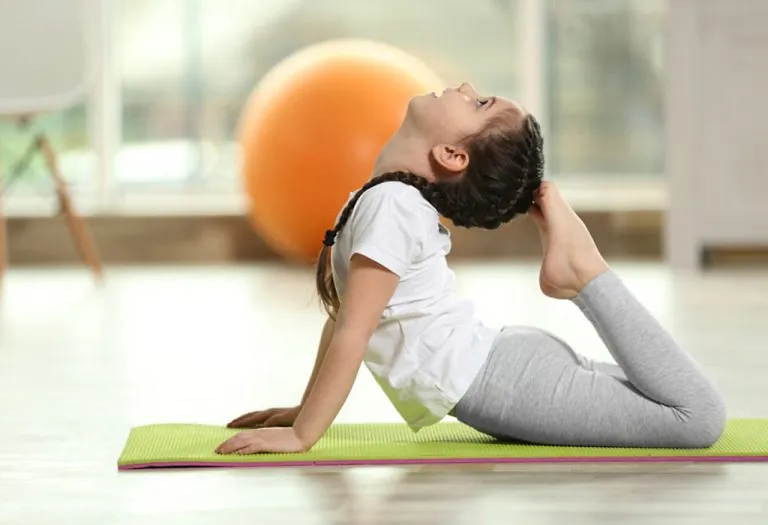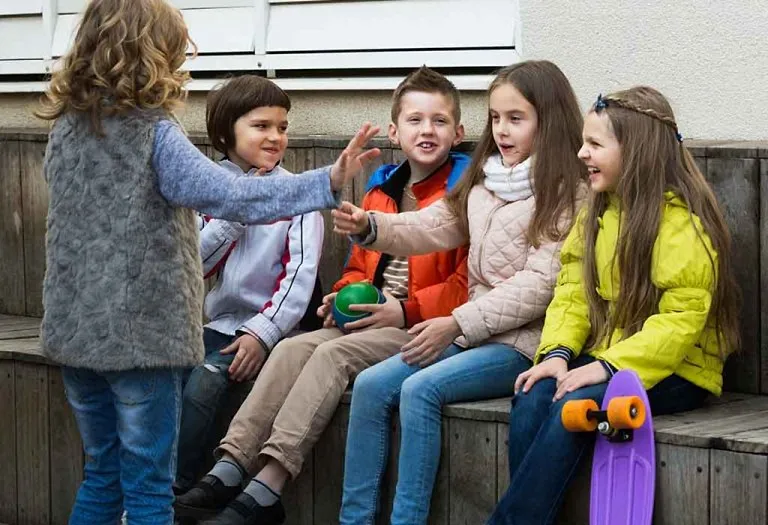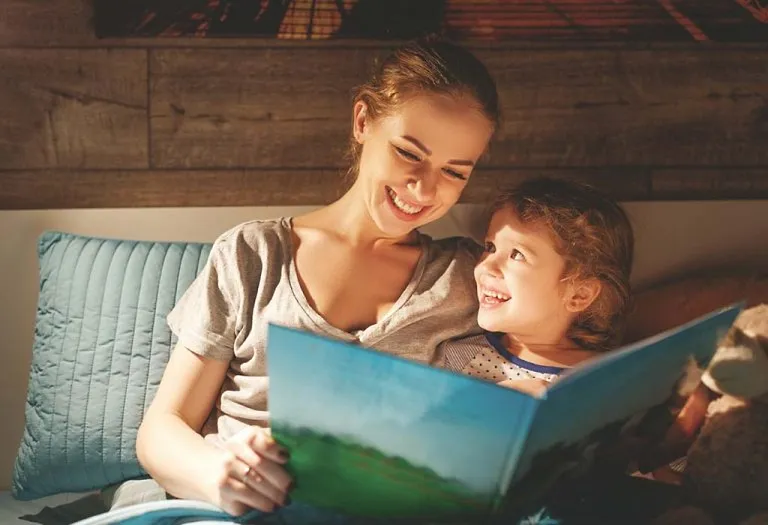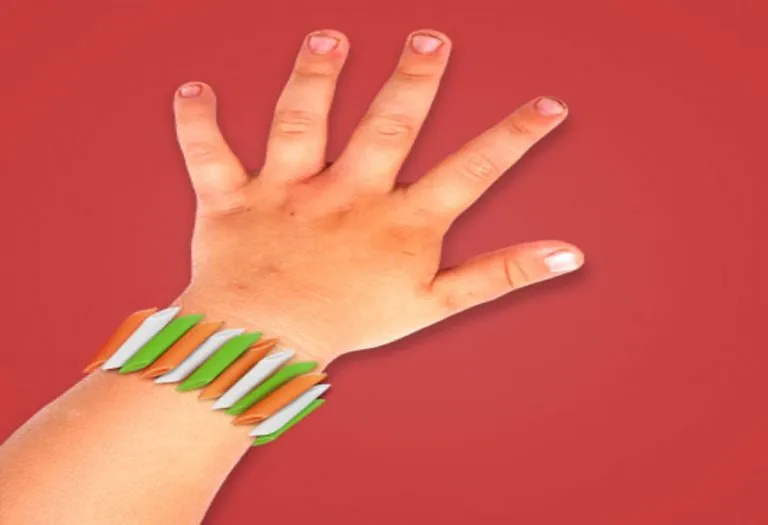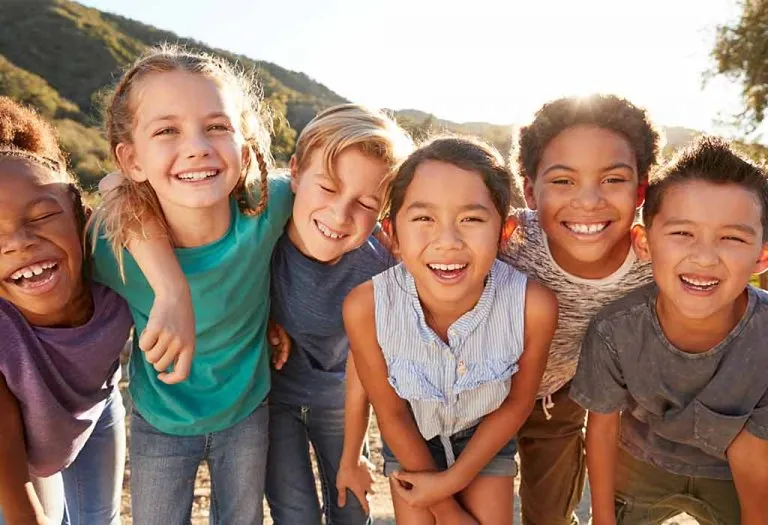10+ Easy Yoga Poses for Kids
- What Is Yoga?
- What Is the Ideal Duration of Yoga for Kids?
- Benefits of Yoga for Kids
- 18 Easy Yoga Poses for Kids
- Facts About Yoga for Children
Yoga offers a gamut of ‘asanas’ or poses for addressing different aspects of well-being. From poses that simply calm us down to poses that therapeutically cure many underlying physical conditions, the science of yoga is very versatile. The purpose of designing a yoga program for kids becomes very important in choosing the right kind of poses for them. Yoga programs for kids are mainly intended to make them learn to accept their bodies, be more disciplined in their actions and be calmer to focus and concentrate in a better way. When practised over a period of time, it makes them physically and mentally strong and improves their overall health and wellness. Read on to learn yoga poses for kids.
What Is Yoga?
Yoga is the ancient science of combining and harnessing the physical, mental and spiritual energies of the body to unfold its full potential. It has gained significant popularity in recent times as an effective means of combating the pressures of today’s world (1). Many adults have integrated the practice of yoga asana in their regular schedule and have greatly benefited from it.
With many new forms of exercise mushrooming every single day, this ancient practice of yoga is slowly and steadily growing due to its holistic healing nature.
Kids in today’s day and age are overstimulated with the availability of so many distractions in the form of gadgets and toys. This has a profound effect on their attention span and their concentration level. Low immunity due to unhealthy eating habits and pollution is another major cause of concern for parents today. Halting the rapidly changing world is impossible. The only solution to this problem lies in dealing with it by empowering the kids.
Yoga is a blessing to mankind, and the importance of yoga for kids in solving these problems cannot be reiterated enough. Kids are generally very quick at learning and therefore, incorporating yogic practices in their routine early on in life can be a great way to ensure a healthy lifestyle for them.
What Is the Ideal Duration of Yoga for Kids?
The ideal duration of yoga for kids depends on their age and attention span, but generally, 10–30 minutes per session is effective—younger children (3–6 years) do best with short, playful 10–15 minute sessions, while older kids (7–12 years) can engage for 20–30 minutes.
Benefits of Yoga for Kids
There are innumerable benefits that yoga has for kids when practised regularly. Here are a few of the benefits of yoga steps for kids:
- It can be an effective calming technique for kids. A simple exercise of observing their breathing pattern can improve their focus, attention and calmness (2).
- It can help them build a positive self-image about their body and give them control of their flexibility and agility.
- Asanas like the suryanamaskar improve their ability to balance their body which indirectly acts as a meditative posture for them.
- Holding the focus to stay in a certain posture is especially good for kids as they take their baby steps towards achieving self-control.
- Channelised breathing patterns, prescribed in the various pranayamas, boost the immunity and energise the body. This protects them from upper respiratory problems that have become a common problem among children today.
- Some asanas improve the core strength immensely, correcting their postural problems.
- Some yoga postures are specifically designed for children with autism spectrum disorders to meet their special therapeutic needs (3).
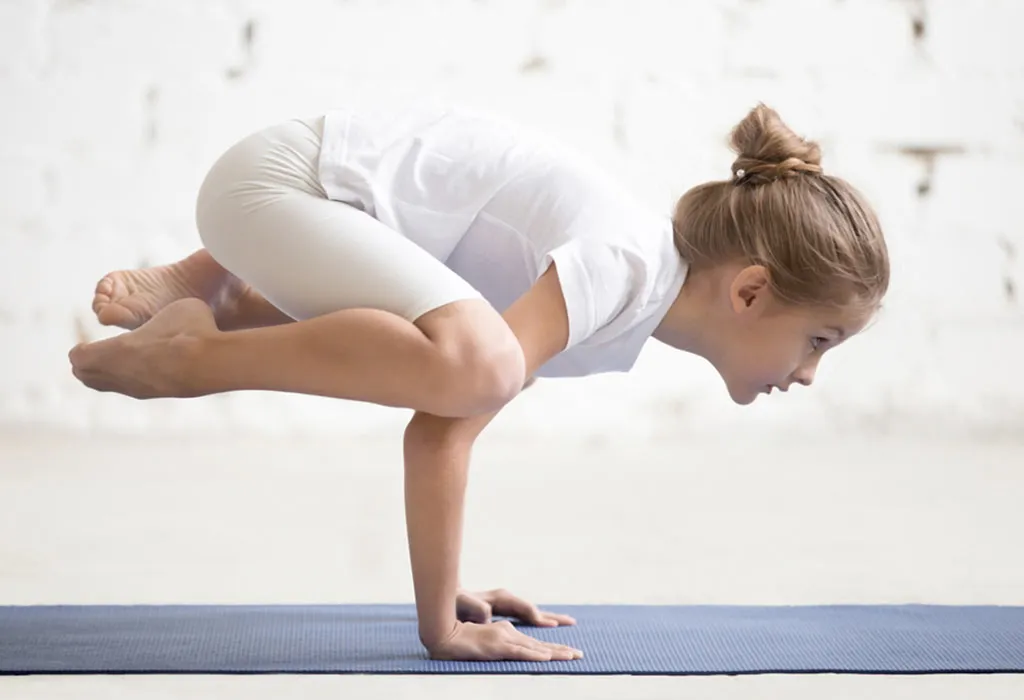
In today’s competitive world, even school-going children are subjected to tremendous stress. The pressure to achieve and excel in academics and extracurricular activities is high, due to which many kids suffer from anxiety-related issues. Yoga asanas, not only help them relax but also give them the time and patience to slow down and get a perspective on things around them (4). Learning a new skill is easier in childhood and the neuronal connections made at a younger age tend to leave a lasting imprint in their brains.
18 Easy Yoga Poses for Kids
There are a few yoga asanas for kids that are scientifically proven to help children improve their overall physical and mental awareness. Here are a few asanas that are great for kids (5).
1. Adho Mukhasvanasana – The Dog Pose
This animal yoga pose mimics a stretching dog and helps kids build strength and flexibility.
Steps to Do
- Start on hands and knees (tabletop position).
- Tuck toes, lift hips up, and straighten legs (forming an upside-down “V”).
- Press hands into the ground and keep the head relaxed.
- Hold for 3–5 breaths, then gently lower back down.
Caution to Take
Avoid locking elbows or knees. If wrists hurt, try bending knees slightly.
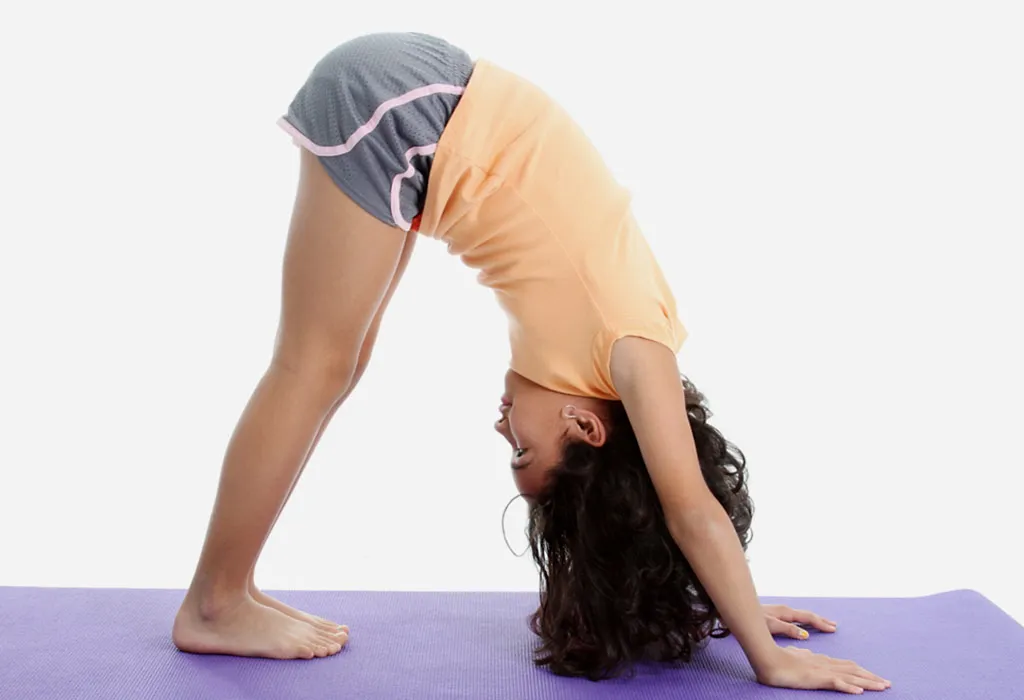
2. Vrikshasana – The Tree Pose
This balancing pose helps kids improve focus and stability while pretending to be a tall, steady tree.
Steps to Do
- Stand tall with feet together.
- Lift one foot and place it on the inner thigh or calf (avoid the knee).
- Bring hands together in prayer position or stretch them overhead like branches.
- Hold for a few breaths, then switch sides.
Caution to Take
Use a wall for support if wobbling. Avoid placing the foot directly on the knee.
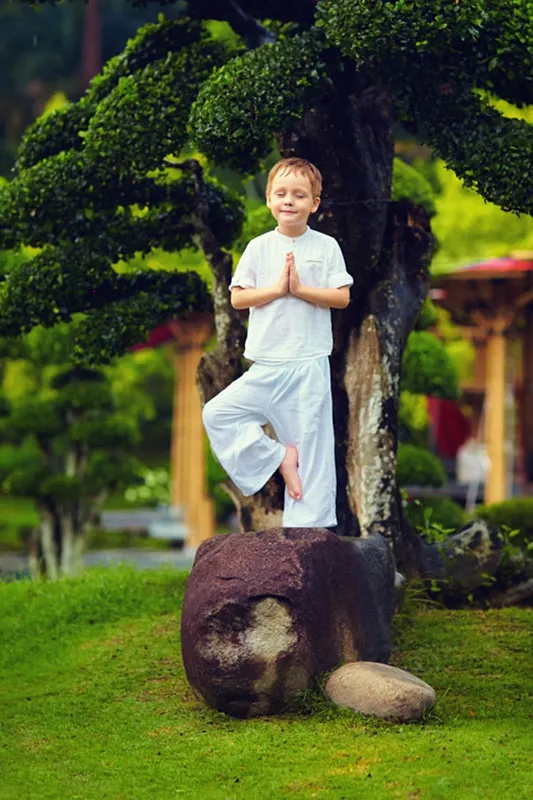
3. Virabhadrasana I – Warrior Pose I
Kids will love feeling strong and powerful in this confident warrior stance.
Steps to Do
- Step one foot back, keeping the front knee bent at 90 degrees.
- Raise arms overhead, palms facing each other.
- Keep the back leg straight and strong.
- Hold for 3–5 breaths, then switch sides.
Caution to Take
Ensure the front knee doesn’t go past the ankle. Keep hips squared forward.
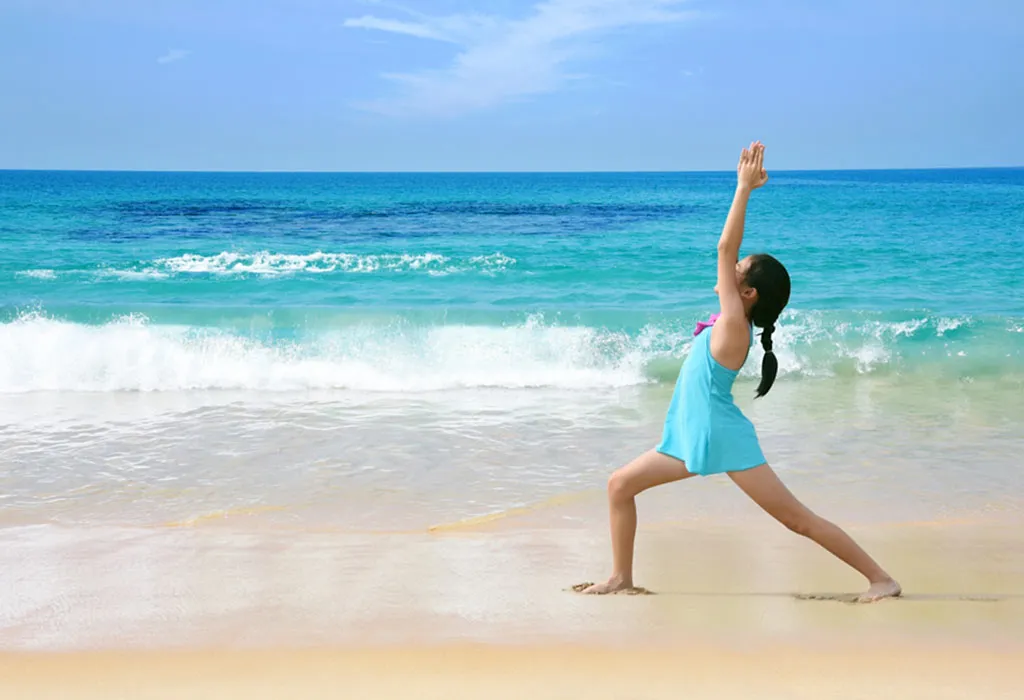
4. Tadasana – The Mountain Pose
A simple yet powerful pose that teaches kids good posture and body awareness.
Steps to Do
- Stand tall with feet hip-width apart.
- Arms relaxed at sides or stretched overhead.
- Imagine being a strong, steady mountain.
- Breathe deeply for 5–10 seconds.
Caution to Take
Avoid locking knees; keep them slightly soft.
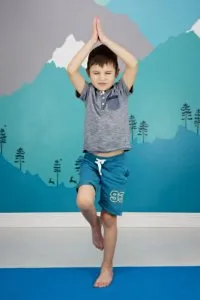
5. Uttanasana – The Rag Doll Pose
A calming stretch that helps kids release tension in their backs and legs.
Steps to Do
- Stand tall, then bend forward from the hips.
- Let arms and head hang loosely.
- Sway gently side to side if comfortable.
- Hold for 3–5 breaths, then roll up slowly.
Caution to Take
Bend knees slightly if hamstrings feel tight.
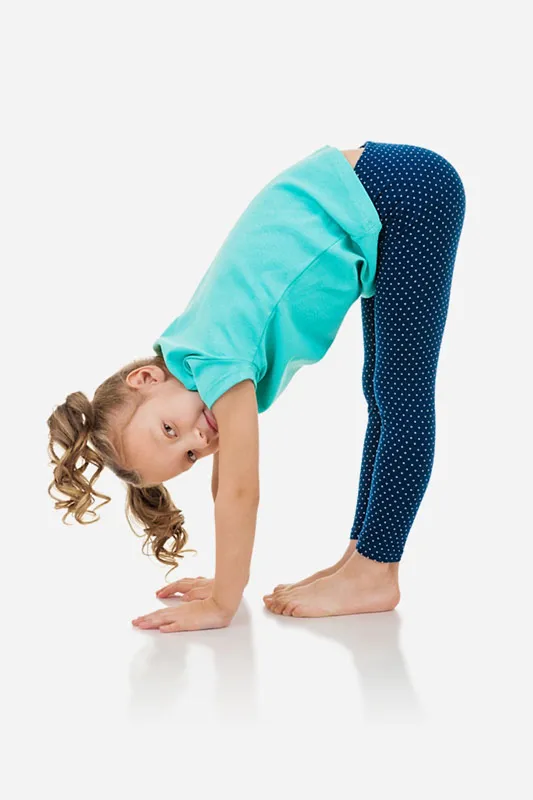
6. Baddha Konasana – The Butterfly Pose
A fun seated pose that mimics a butterfly’s wings and helps with hip flexibility.
Steps to Do
- Sit with knees bent and soles of feet touching.
- Hold feet and gently flap knees up and down.
- Sit tall and breathe deeply.
Caution to Take
Avoid forcing knees down; let them move naturally.
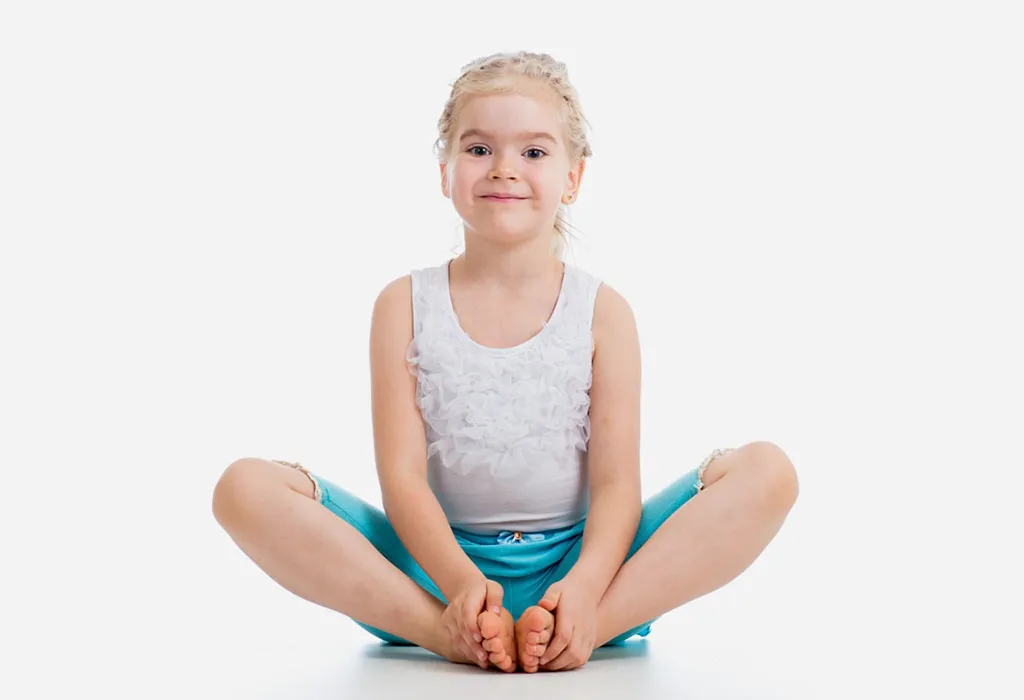
7. Setu Bandhasana – The Bridge Pose
A gentle backbend that strengthens the legs and spine while energising the body.
Steps to Do
- Lie on your back with knees bent and feet flat.
- Lift hips up, keeping shoulders grounded.
- Clasp hands under the back if comfortable.
- Hold for a few breaths, then lower slowly.
Caution to Take
Avoid straining the neck; keep it relaxed.
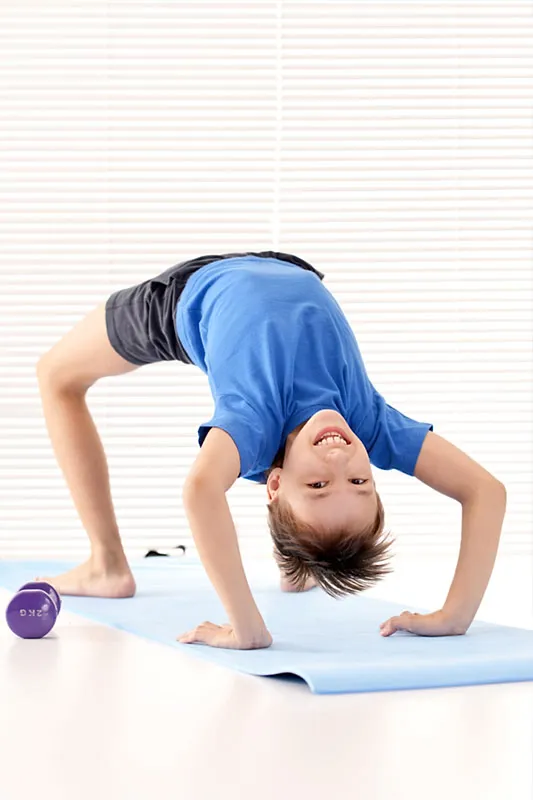
8. Pranayama
Breathing exercises help kids calm their minds, boost focus, and energise their bodies in a fun way.
Steps to Do
- Sit tall or lie down, hands on belly.
- Inhale deeply through the nose, filling the belly like a balloon.
- Exhale slowly, deflating the “balloon.”
Caution to Take
Avoid forceful breathing; keep it gentle and playful. Stop if dizzy or lightheaded.
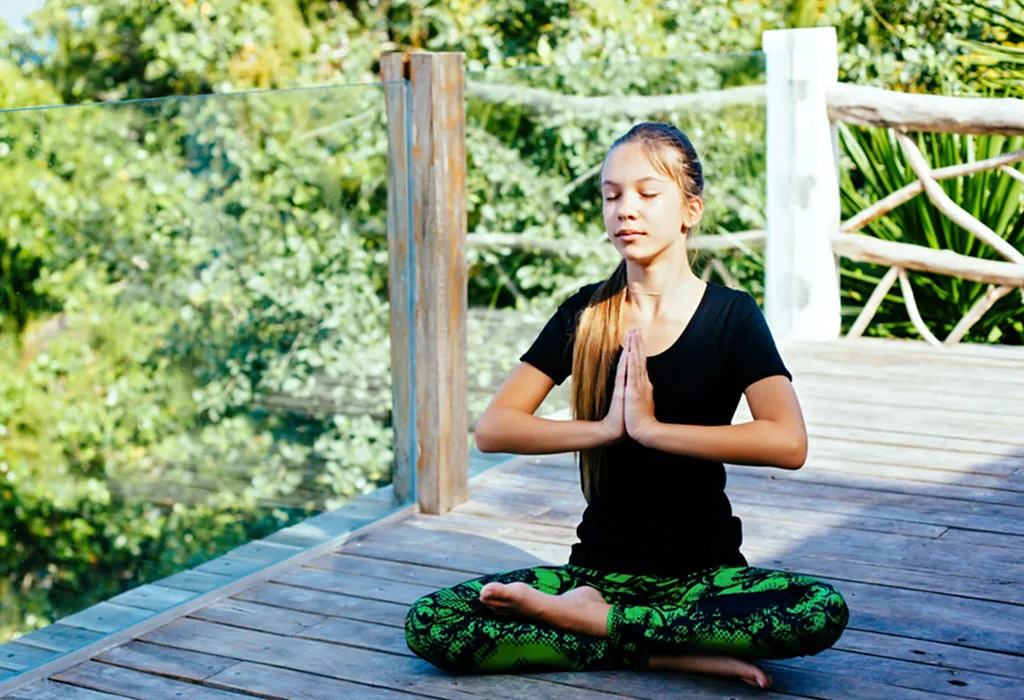
9. Balasana – The Child’s Pose
A restful pose that helps kids relax and unwind.
Steps to Do
- Kneel on the floor, sitting back on heels.
- Fold forward, stretching arms out or resting them by the sides.
- Rest your forehead on the mat and breathe deeply.
Caution to Take
If knees are sensitive, place a cushion under the hips.
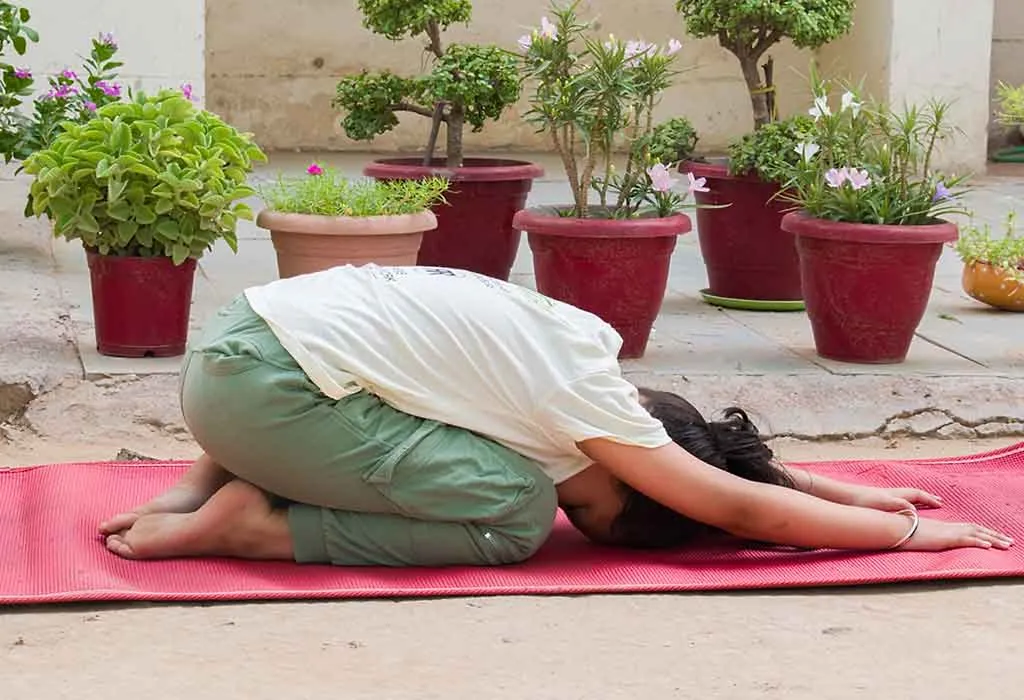
10. Bhujangasana – Cobra Pose
A gentle backbend that strengthens the spine and opens the chest.
Steps to Do
- Lie on the stomach, hands under shoulders.
- Press into hands, lifting the chest while keeping hips down.
- Look forward or slightly up.
Caution to Take
Avoid over-arching the back; keep it gentle.
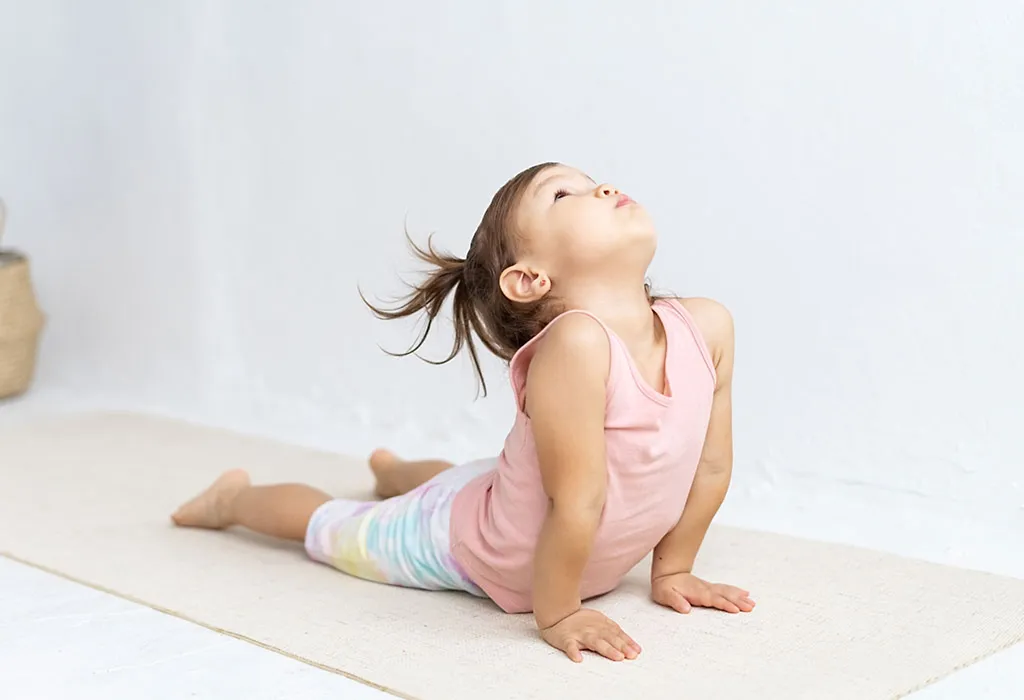
11. Savasana – Final Relaxation Pose
A calming pose to end the session, helping kids relax and absorb the benefits of yoga.
Steps to Do
- Lie flat on the back, arms and legs relaxed.
- Close eyes and breathe deeply for 1–3 minutes.
Caution to Take
Use a blanket if the floor is cold.
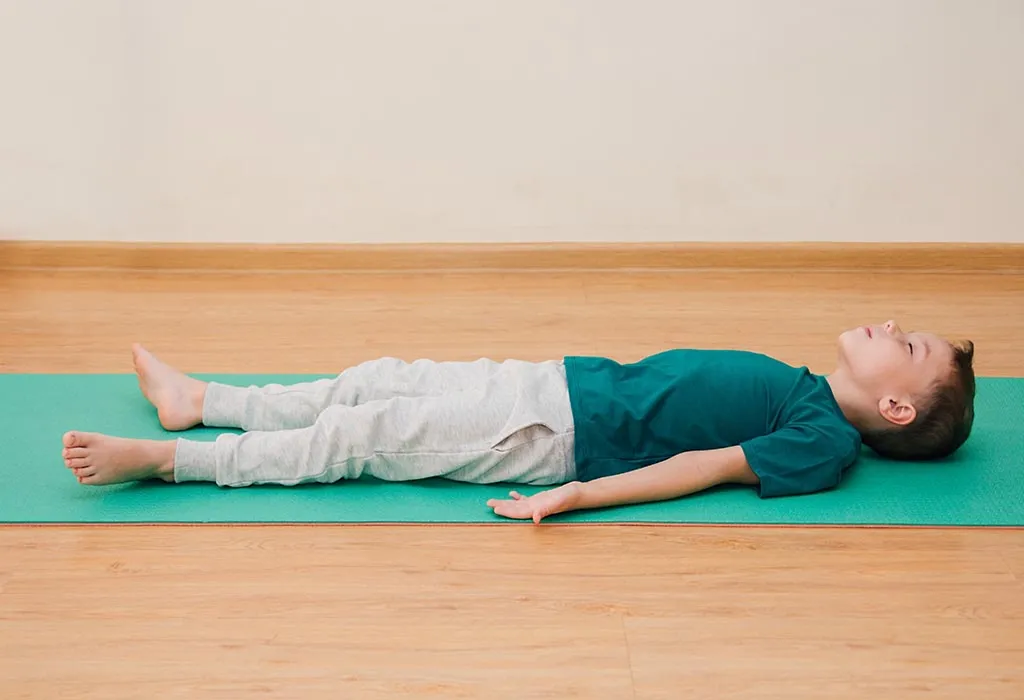
12. Garbhasana – Egg Pose / Child’s Pose with a Twist
A cosy, calming pose that helps kids feel safe and relaxed.
Steps to Do
- Sit on heels, knees wide apart.
- Fold forward, resting belly between thighs.
- Stretch arms forward or wrap them around legs like a “snug egg.”
- Breathe deeply for 5–10 seconds.
Caution to Take
Place a pillow under the forehead if the floor is hard.
13. Marjaryasana-Bitilasana – Cat-Cow Pose
A playful duo that loosens the spine and encourages creativity.
Steps to Do
- Start on hands and knees (tabletop position).
- Cow Pose: Inhale, drop belly, lift head and tailbone (like a happy cow).
- Cat Pose: Exhale, arch back, tuck chin and pelvis (like a stretching cat).
- Repeat 5–8 times, flowing with breath.
Caution to Take
Move slowly to avoid wrist strain.
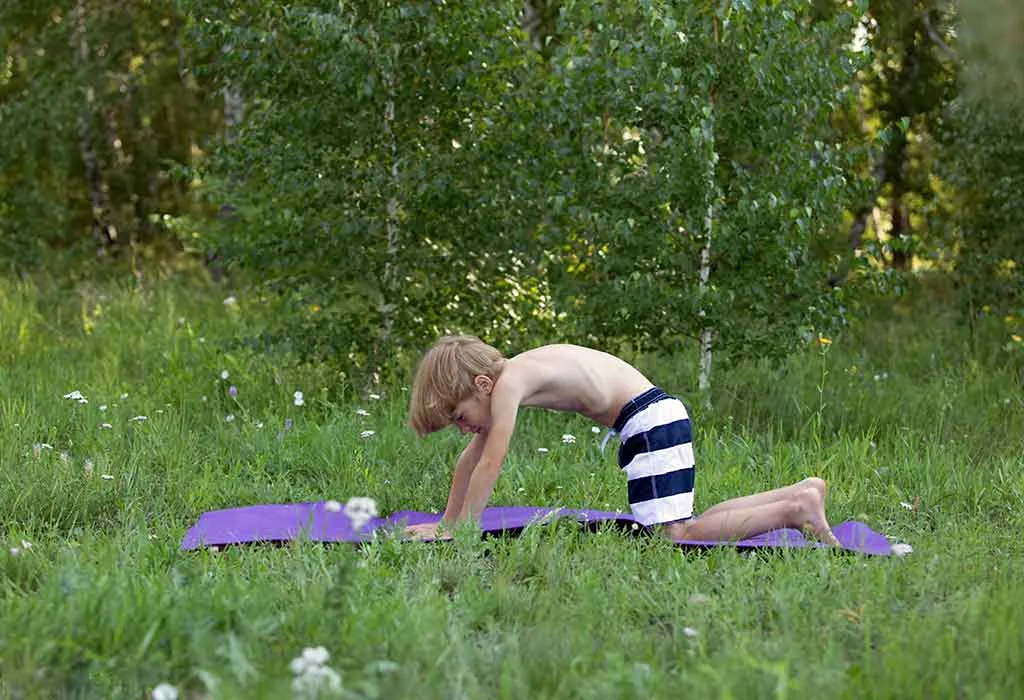
14. Ananda Balasana – Happy Baby Pose
A giggle-inducing pose that releases tension in hips and back.
Steps to Do
- Lie on back, hug knees to chest.
- Grab the outsides of feet (or ankles) with hands.
- Gently rock side-to-side like a happy baby.
Caution to Take
Avoid forcing knees toward the floor—keep it gentle!

15. Utkata Konasana – Goddess Pose / Superhero Pose
Makes kids feel powerful (like Wonder Woman or Thor!).
Steps to Do
- Stand with feet wide, toes turned out slightly.
- Bend knees, lowering hips (like sitting in a chair).
- Raise arms to shoulder height, palms forward.
- Hold for 3–5 breaths, imagining superhero energy!
Caution to Take
Knees should align with toes (don’t let them collapse inward).
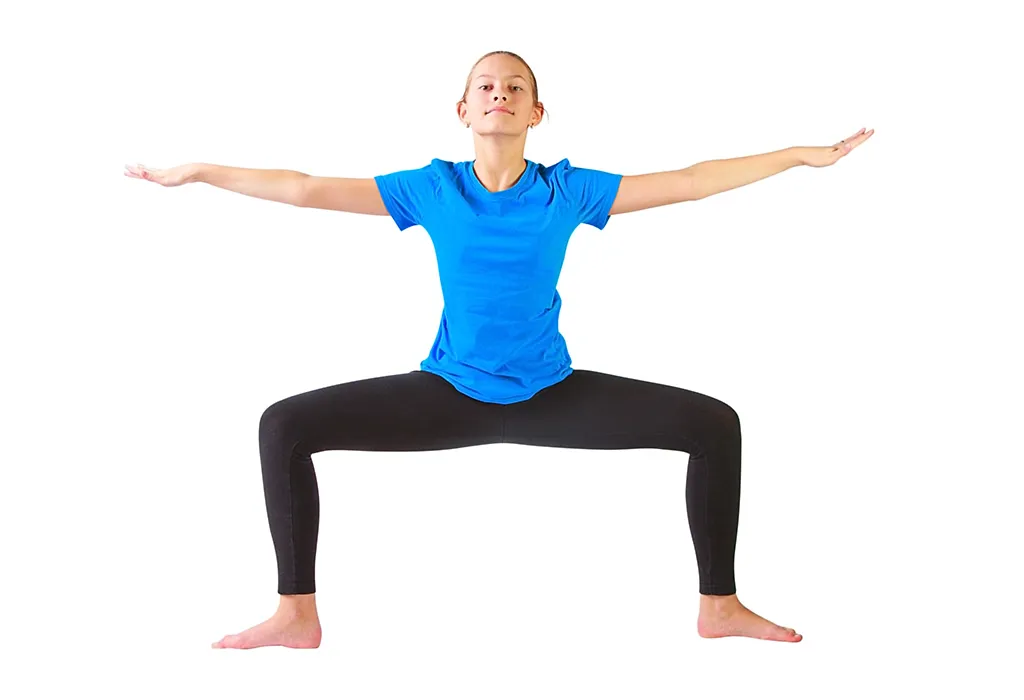
16. Natarajasana – Dancer’s Pose
A fun balance challenge that boosts focus.
Steps to Do
- Stand tall, shift weight to one leg.
- Bend the other knee, holding ankle with the same-side hand.
- Lean forward slightly, extending free arm like a dancer.
- Hold for 2–3 breaths, then switch sides.
Caution to Take
Use a wall for support if wobbling.
17. Salabhasana – Locust Pose
Kids pretend to be airplanes zooming through the sky!
Steps to Do
- Lie on belly, arms stretched back like wings.
- Lift chest, arms, and legs off the ground.
- Hold for 3 breaths, making “zoom” noises!
Caution to Take
Keep neck neutral (don’t crane it up too high).
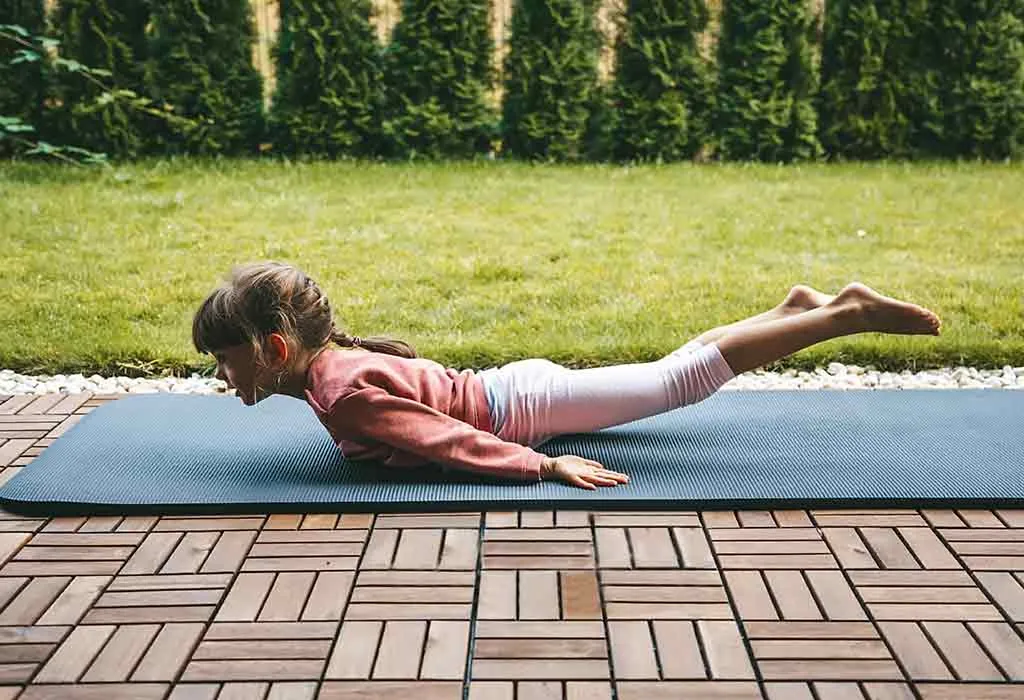
18. Sukhasana – Easy Pose with Affirmations
A quiet moment for mindfulness and deep breathing.
Steps to Do
- Sit cross-legged, hands on knees.
- Close eyes and take 3 slow breaths.
- Whisper a positive phrase: “I am calm” or “I am brave.”
Caution to Take
Sit on a cushion if hips are tight.
This was our list of yoga poses for kids with names.
Facts About Yoga for Children
Yoga isn’t just for adults—it’s a fantastic way for kids to build strength, focus, and emotional resilience while having fun! Here are six surprising benefits of yoga for children:
- Yoga began in ancient India over five thousand years ago as a practice of unity
- The Sanskrit root “yuj” means to join, reflecting yoga’s purpose of connection
- First written records appear in the Rig Veda scriptures around 1500 BCE
- Ancient texts credit Lord Shiva as yoga’s original teacher to seven sages
- Rishikesh became the global yoga hub attracting practitioners worldwide
- Swami Vivekananda brought yoga’s philosophical foundations to the West
Simple yoga for kids has to be taught in a very creative and fun way to the children. Another interesting thing about teaching yoga exercises for kids is that they enjoy learning it in a group. Family yoga programs are on the rise today, owing to the increased awareness about the benefits of yoga.
References/Resources:
2. Harvard Health Publishing – Child & Teen Health More than just a game: Yoga for school-age children
4. National Library of Medicine – Effect of yoga on academic performance in relation to stress
5. Cleveland Clinic – Yoga for Kids: Benefits and 17 Poses and Exercises To Get Started
Also Read:
Creative Activities for Children
Trust Building Activities for Kids
15 Fun and Interesting Outdoor Activities for Kids
Was This Article Helpful?
Parenting is a huge responsibility, for you as a caregiver, but also for us as a parenting content platform. We understand that and take our responsibility of creating credible content seriously. FirstCry Parenting articles are written and published only after extensive research using factually sound references to deliver quality content that is accurate, validated by experts, and completely reliable. To understand how we go about creating content that is credible, read our editorial policy here.






